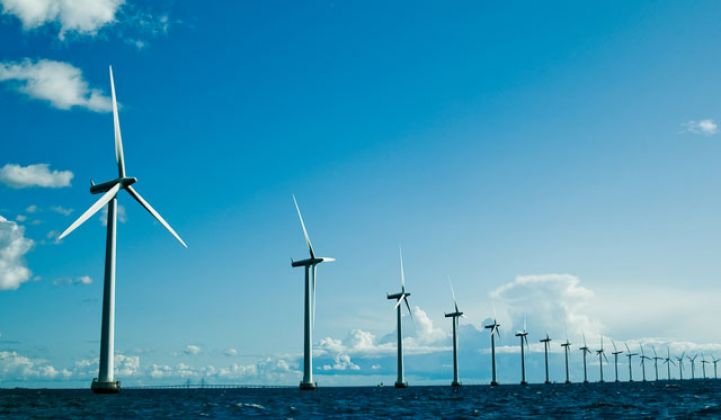The Department of Energy is rightly investing millions of dollars into offshore wind technology. But they’re investing it in the wrong places.
Offshore wind energy is poised to become a major player in America’s energy portfolio. Many stakeholders, including private industry, state legislators and governors, as well as the Department of Interior, recognize its potential. Since 2006, the Department of Energy’s (DOE) Wind and Water Power Technologies Office has invested over $300 million in research focused on overcoming the technical, market and technological barriers to offshore wind development in the United States.
But the endeavors funded by this program are not providing the kinds of information that developers need to get offshore wind off the ground.
The good news is that a lot of the work has been done for us. Europe has already invested in the early research and development that made offshore wind competitive with other power generation methods. And we already have decades of research on currents, wave heights, the ocean floor, and sea level-wind data. What we need now is detailed information about the geology 100 feet below the ocean floor, and wind data at 300 feet above the water’s surface, where the turbines need to catch the breeze.
This information is critical to make educated investments about where to locate offshore wind in the United States, and it is where the DOE can leverage its resources and expertise to jumpstart an industry that has the potential to generate over 4,000 gigawatts of energy -- four times America’s total energy needs.
Building offshore wind farms is far more difficult than constructing land-based wind because of the inherent complexities of working in the ocean. Offshore wind development is risky, requiring higher financial returns to offset the risk. This keeps estimated power costs high and creates negative perceptions about the economics of offshore wind.
Accurate data at potential offshore wind-farm sites will reduce the risk that wind companies and investors take on when they begin new projects. Furthermore, accurate data allows government agencies to review projects more quickly. It enables developers to choose the right equipment and get accurate construction bids. All of this translates into lower power prices for customers.
While the millions of dollars invested by DOE were dispersed with good intentions, they have not provided the wind industry what it needs most: more certainty about where to locate offshore wind farms. Onsite information will allow the industry to make major cost reductions based on facts, not guesses.
What we are proposing is a two-part plan that will provide developers, utilities and ratepayers the information they need.
First, conduct geophysical studies of the wind energy areas. Maryland did this and helped remove uncertainty for all stakeholders involved. Once the geophysical studies are complete, dig holes. Developers need to know the subsurface conditions for every potential lease area. It will bring down initial cost estimates on construction and fabrication.
Second, put up at least one wind-turbine-height meteorological tower in each lease area. Just one tower can reduce uncertainty about the wind conditions significantly, and ensure that developers choose the right wind turbine for the site. It provides regulators with the data needed to ensure that bidders don’t over- or underestimate a site’s capacity to generate energy.
Public onsite wind data means that all developers have a common starting point, spurring more competition within the sector. This will also give local utilities and independent system operators a better idea of when the wind is blowing, providing the most efficient use of the resource to the customer.
The potential benefits of offshore wind development create an exciting opportunity for the public and private sectors to work together. DOE has the resources to help bring America’s budding offshore wind energy industry to fruition. To make it work, we need to use our resources in the most effective manner possible.
This opportunity is too big for America to pass up.
***
Jigar Shah is a clean energy entrepreneur and the author of Creating Climate Wealth: Unlocking the Impact Economy. He's also a co-host of GTM's Energy Gang podcast.




